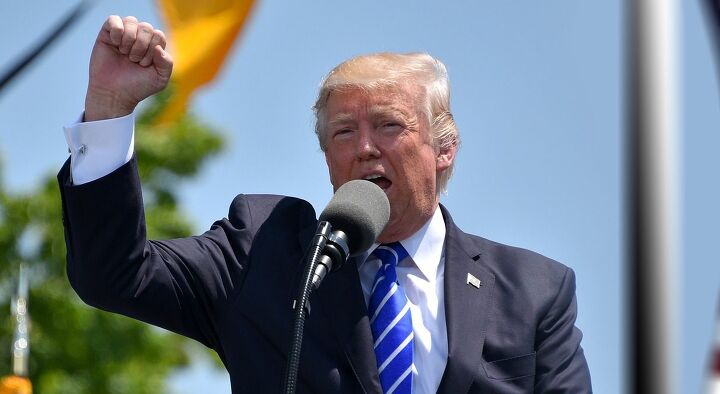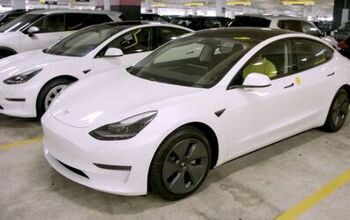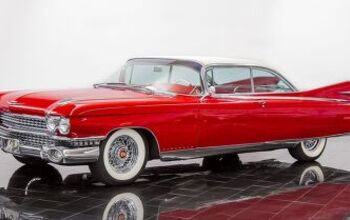NAFTA No More: U.S. Reaches Deal With Mexico, Puts Pressure on Canada [Updated]

President Donald Trump announced a trade “understanding” with Mexico on Monday — not to be confused with an official deal — that would lead to an overhaul of the North American Free Trade Agreement. Trump made the announcement from the Oval Office, with Mexican President Enrique Pena Nieto listening in by speakerphone.
While it’s still too early to show up in a Lockheed S-3 Viking and tell the world “mission accomplished,” the announcement is the most overt example of progress on NAFTA we’ve seen. Interesting, considering it seemed as if Trump was openly calling for its death during the meeting.
Earlier in the day, Mexican officials said trade talks with the U.S. had concluded, adding that an announcement could come later in the day. The White House confirmed the reports an hour later on its government website, with Donald Trump stating there was a “big deal looking good with Mexico” via twitter.
Negotiators from the United States and Mexico have worked for weeks to resolve differences on numerous contentious issues while Canada waits in the wings. Among the biggest issues for Mexico are the rules of origin, which dictate that a certain percentage of every automobile must be built from parts that originated from countries within the NAFTA region to avoid tariffs. The U.S. wants to get that percentage up, while Mexico has taken a hard stance against it. The Trump administration also pushed for the inclusion of a sunset provision, under which the revised NAFTA agreement would expire after five years unless all three countries take steps to extend it. Both Canada and Mexico turned their nose up at the idea.
It’s assumed those issues and a handful of others served as sticking points that frequently stalled meaningful discussion on other aspects of trade. However, Mexican Economy Minister Ildefonso Guajardo Villarreal said Monday that the nations have “continued making progress,” and would eventually reach some kind of agreement. He expects Canada to return to the table soon.
“Once the bilateral issues get resolved, Canada will be joining the talks to work on both bilateral issues and our trilateral issues,” Chrystia Freeland, Canada’s foreign minister, said Friday. “And will be happy to do that, once the bilateral US-Mexico issues have been resolved.”
“Big day for trade. Big day for our country,” Trump said in the opening moments of the hastily assembled announcement before handing the floor over to the Mexican president.
“[We would like to] celebrate the understand we’ve had between both negotiating teams on NAFTA,” said Peña Nieto over the phone before announcing his pleasure that Canada could now rejoin the debate.
Trump seemed less interested in a multilateral deal that included Canada, saying he would contact Prime Minister Justin Trudeau shortly, but noted that he would be happy to establish a separate deal and abandon the NAFTA name, due to negative connotations — calling the current understanding the “United States-Mexico Trade Agreement.”
Specifics on the deal are practically nonexistent, however. Likely referring to the automotive industry, the president said it would be especially great for the manufacturing sector, but gave no details. Future (more formal) announcements are planned. But the president’s statement from the Oval Office seemed targeted at letting American’s know a deal had been reached with Mexico, signatures were forthcoming, and that the trade ball was now in Canada’s court.
Update: Later in the day, details emerged about some of the agreed-upon issues. The new arrangement stipulates that U.S. and Mexico-based, car companies would be required to manufacturer at least 75 percent of an automobile’s total value within North America. The existing rules require 62.5 percent. It was also said that a certain proportion of the vehicles will have to be built by workers earning at least $16 an hour in both countries. Mexican-based companies that don’t adhere to the new regulations would be subjected to a 2.5 percent tariff when exporting to the U.S.
Trump also said he would consider upping tariffs on Canadian automobiles in response to its high dairy taxes, saying it would be the easiest way to hammer out a deal. But he was more than willing to have talks that would result in a mutually beneficial agreement. “We are looking at helping our neighbors too,” he said. “If we can help our neighbors that’s a good thing, not a a bad thing.”
[Image: NAFTA Secretariat]

A staunch consumer advocate tracking industry trends and regulation. Before joining TTAC, Matt spent a decade working for marketing and research firms based in NYC. Clients included several of the world’s largest automakers, global tire brands, and aftermarket part suppliers. Dissatisfied with the corporate world and resentful of having to wear suits everyday, he pivoted to writing about cars. Since then, that man has become an ardent supporter of the right-to-repair movement, been interviewed on the auto industry by national radio broadcasts, driven more rental cars than anyone ever should, participated in amateur rallying events, and received the requisite minimum training as sanctioned by the SCCA. Handy with a wrench, Matt grew up surrounded by Detroit auto workers and managed to get a pizza delivery job before he was legally eligible. He later found himself driving box trucks through Manhattan, guaranteeing future sympathy for actual truckers. He continues to conduct research pertaining to the automotive sector as an independent contractor and has since moved back to his native Michigan, closer to where the cars are born. A contrarian, Matt claims to prefer understeer — stating that front and all-wheel drive vehicles cater best to his driving style.
More by Matt Posky
Latest Car Reviews
Read moreLatest Product Reviews
Read moreRecent Comments
- MaintenanceCosts You expect everything on Amazon and eBay to be fake, but it's a shame to see fake stuff on Summit Racing. Glad they pulled it.
- SCE to AUX 08 Rabbit (college car, 128k miles): Everything is expensive and difficult to repair. Bought it several years ago as a favor to a friend leaving the country. I outsourced the clutch ($1200), but I did all other work. Ignition switch, all calipers, pads, rotors, A/C compressor, blower fan, cooling fan, plugs and coils, belts and tensioners, 3 flat tires (nails), and on and on.19 Ioniq EV (66k miles): 12V battery, wipers, 1 set of tires, cabin air filter, new pads and rotors at 15k miles since the factory ones wore funny, 1 qt of reduction gear oil. Insurance is cheap. It costs me nearly nothing to drive it.22 Santa Fe (22k miles): Nothing yet, except oil changes. I dread having to buy tires.
- AZFelix 2015 Sonata Limited72k when purchased, 176k miles currentlyI perform all maintenance and repairs except for alignment, tire mounting, tire patching, and glass work (tint and passenger left due to rock hit). Most parts purchased through rockauto.com.Maintenance and repairs during three years of ownership:Front rotors and all brake pads upgraded shortly after purchase.Preparing for 17th oil change (full synthetic plus filter c.$50), one PCV valve.Timing & accessory belts, belt tensioner.Coolant full flush and change.Fibrous plastic material engine under tray replaced by aftermarket solid plastic piece $110.One set of tires (c.$500 +installation) plus two replacements and a number of patches due to nails, etc. Second set coming soon.Hood struts $30.Front struts, rear shocks, plus sway bar links, front ball joints, tie rod ends, right CV axle (large rock on freeway damaged it and I took the opportunity to redo the rest of items on this list).Battery c.$260.Two sets of spark plugs @ $50/set.Three sets of cabin and engine filters.Valve cover gasket (next week).Averages out to c.$1400 per year for the past three years. Minor driver seat bolster wear, front rock chips, and assorted dents & dings but otherwise looks and drives very well.
- 3-On-The-Tree 2014 Ford F150 Ecoboost 3.5L. By 80,000mi I had to have the rear main oil seal replaced twice. Driver side turbo leaking had to have all hoses replaced. Passenger side turbo had to be completely replaced. Engine timing chain front cover leak had to be replaced. Transmission front pump leak had to be removed and replaced. Ford renewed my faith in Extended warranty’s because luckily I had one and used it to the fullest. Sold that truck on caravan and got me a 2021 Tundra Crewmax 4x4. Not a fan of turbos and I will never own a Ford again much less cars with turbos to include newer Toyotas. And I’m a Toyota guy.
- Duke Woolworth Weight 4800# as I recall.


































Comments
Join the conversation
No, there's no deal. The US and MX have an agreement, but to make a deal they now need to get Canada on board. If there's any justice at all in this world, Canada will string he proceedings along until after the mid terms, the way Iran waited for uncle Ronnie to be crowned before releasing their hostages.
On the surface, the new bilateral deals look like a strong slap against China, especially the unlawful routing of components from China, through Mexico. More importantly, this is part of a bigger strategy to start undermining China and strengthen the economies of our southern neighbors. It is much better for America's immigration policy to try and push lower labor cost manufacturing here in the Americas (think Guatemala, Nicaragua, Honduras). The low cost labor manufacturing is going to somewhere, and frankly, I'd rather it stayed in the Americas to help strengthen our neighbors than to support China's rise.